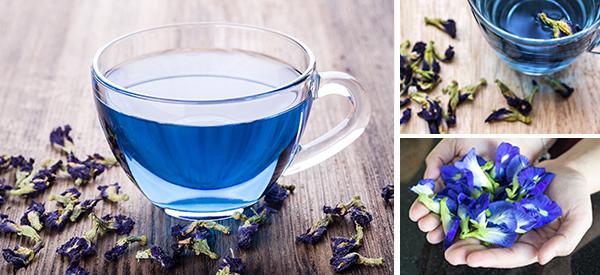
The Anti-Inflammatory Blue Tea
The Clitoria ternatea plant is native to Asia. It’s commonly known as Blue Pea, Butterfly Pea, and Bluebellvine, among other names. While it originated in Asia, it can now be found in the Americas, Africa, and Australia too.
The flowers make a great anti-inflammatory tea thanks to the plant’s anthocyanins which are antioxidant compounds that give the flowers their vibrant blue color. It’s this bright color that makes the flowers popular additions to food dishes and drinks as it acts as a dyeing agent. This versatile plant has also been used in cosmetics, traditional medicine, and even as a natural insecticide.
Butterfly Pea Flower Tea is commonly enjoyed in Thailand and Vietnam after dinner or as a refreshing drink with lemon and honey. You can choose to leave the honey out or swap it for a sweetener of your choice. Before I share the recipe with you, here are some of the health benefits this tea can provide.
Medicinal Benefits of Butterfly Pea Flowers
Butterfly Pea flowers are known for being anti-inflammatory and also have a number of antioxidants stored in them. The ternatin anthocyanins found in the flowers help to fight chronic inflammation, which is a precursor to many diseases. This also helps reduce pain and swelling for conditions such as rheumatoid arthritis.
Other medicinal benefits of this tea include:
Brain – it contains Acetylcholine which is good for the brain and can help fight or slow down memory loss
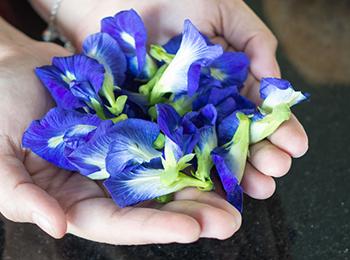 Diabetes – it helps control sugar absorption into the bloodstream
Diabetes – it helps control sugar absorption into the bloodstream
Cancer – it contains cyclotides that can protect against cancers by inhibiting the growth of cancer cells
Skin – it improves skin health because it has anti-Glycation properties that slow down damage to skin proteins
Weight – it may help maintain a healthy weight and even aid with weight loss, although studies have only been done in animals at this stage (the addition of lemon means that this recipe is likely to help)
Medicinal Benefits of Lemons
Lemons contain antioxidants that are powerful anti-inflammatory agents. They also come with many other health benefits including:
Weight – they can help with weight loss because they boost the digestive system and eliminate bad toxins and excess fat
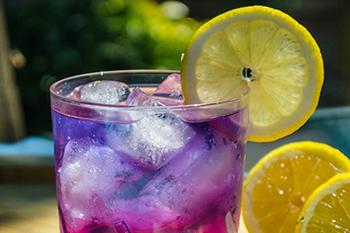 Heart – reduce the chance of developing heart disease by lowering cholesterol levels
Heart – reduce the chance of developing heart disease by lowering cholesterol levels
Kidney stones – help prevent kidney stones from forming thanks to the citric acid in them
Cancer – the limonene can help fight certain cancers
Anemia – the vitamin C and citric acid in lemons help the body absorb as much iron as possible from plant foods, helping to prevent anemia
How to Make this Anti-Inflammatory Blue Tea
This tea takes around 15 minutes to make. The portion sizes below are for two servings and each mug or cup will contain around 10.5 calories. I didn’t use honey or sweetener so you’ll need to adjust the calories if you include this. I made this tea hot but it’s also refreshing to drink it once it has cooled down.
This recipe doesn’t contain any caffeine so you can drink this anytime during the day or night if you like. You can have up to three servings a day.
Ingredients:
- 2 heaped teaspoons of Dried Butterfly Pea flowers or fresh flowers (approximately 14 flowers)
- 1 lemon
- 25 fl oz of water / 700 ml
- Honey or sweetener to taste (optional)
Utensils:
- Teapot
- Kettle or small pot
- Small strainer
- Chopping board
- Sharp knife
- Mug
Method
- Pour 25 fl oz of water (700 ml) into a pot and bring it to a boil.

- Now add 2 heaped teaspoons of Butterfly Pea flowers to your teapot. If you’re using fresh flowers, remove any green stalks and leaves from the bottom first or these may make your tea bitter (you don’t need to do this with dried flowers).

- Once the water has boiled, pour it into the teapot and put the lid on, and let it steep for 10-15 minutes. If you don’t have a teapot, use a pot to boil the water and when the water has boiled you can remove the pot from the stovetop and simply add the flowers, placing a lid on the pot after.
- While your tea is steeping, cut your lemon in half.

- When your flowers have been in the water for 10-15 minutes pour the water into a mug through a strainer.


- Squeeze half a lemon into each mug and watch the color change from bright blue to a purple hue.

Video Recipe
You can now drink your tea once it’s cooled down enough for you. Since the tea has lemon juice in it, remember to rinse your mouth out with water after each mug you drink to remove the acid and protect your tooth enamel.
You can also play around by adding extra ingredients and flavor combinations (e.g. mint, lemongrass, or ginger). As this tea has such a subtle flavor it lends itself to many additions so choose ones that you like and are beneficial to your health. Enjoy!
You may also like:
Add This “Unusual Nutrient” to Coffee or Tea, to Effortlessly and Fully Empty Your Bowels Every Single Morning (Learn More)
What Happens If You Squeeze Lemon In Your Coffee?
Soak Your Troubles Away with Homemade Tub Tea

The Anti-Inflammatory Blue Tea
Ingredients
Equipment
Method
- Pour 25 fl oz of water (700 ml) into a pot and bring it to a boil.
- Now add 2 heaped teaspoons of Butterfly Pea flowers to your teapot. If you’re using fresh flowers, remove any green stalks and leaves from the bottom first or these may make your tea bitter (you don’t need to do this with dried flowers).
- Once the water has boiled, pour it into the teapot and put the lid on, and let it steep for 10-15 minutes. If you don’t have a teapot, use a pot to boil the water and when the water has boiled you can remove the pot from the stovetop and simply add the flowers, placing a lid on the pot after.
- While your tea is steeping, cut your lemon in half.
- When your flowers have been in the water for 10-15 minutes pour the water into a mug through a strainer.
- Squeeze half a lemon into each mug and watch the color change from bright blue to a purple hue.
- You can now drink your tea once it’s cooled down enough for you. Since the tea has lemon juice in it, remember to rinse your mouth out with water after each mug you drink to remove the acid and protect your tooth enamel.You can also play around with adding extra ingredients and flavor combinations (e.g. mint, lemongrass, or ginger). As the blue tea has such a subtle flavor it lends itself to many additions so choose ones that you like and are beneficial to your health and enjoy.






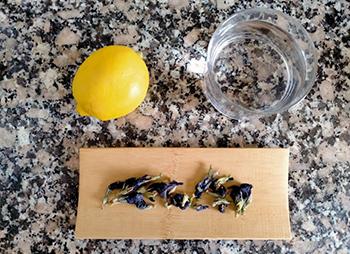
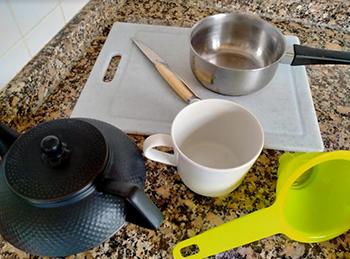
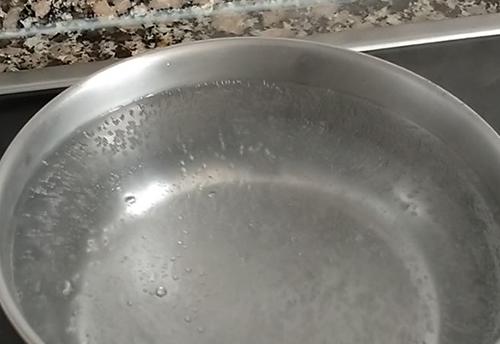
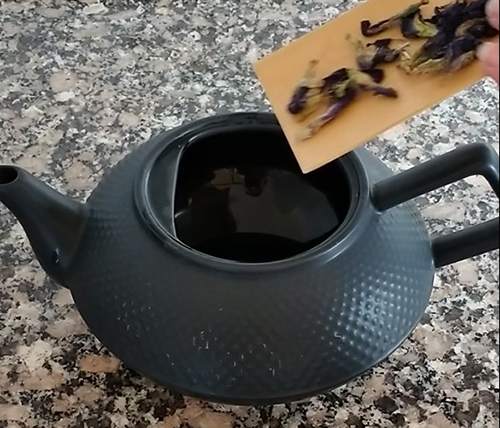
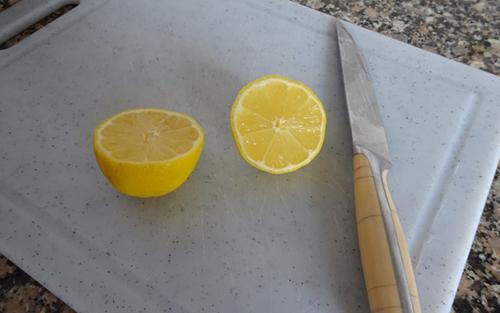
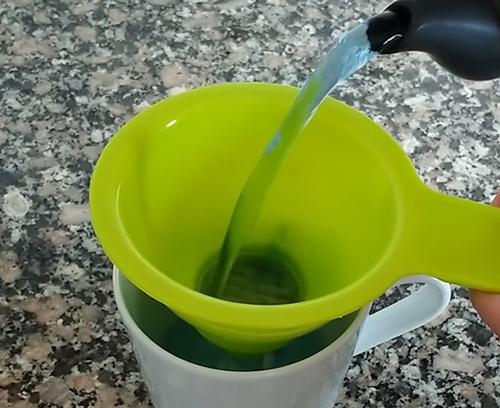
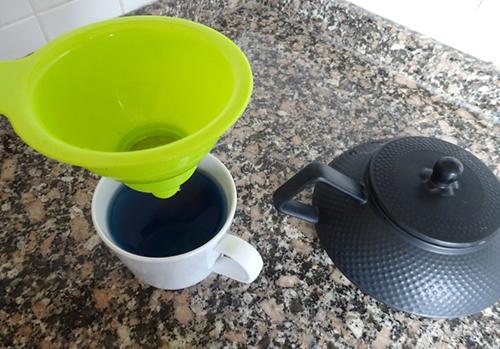
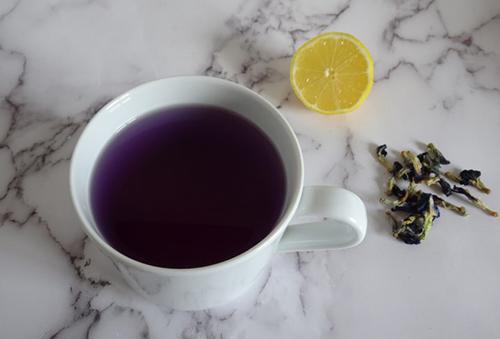

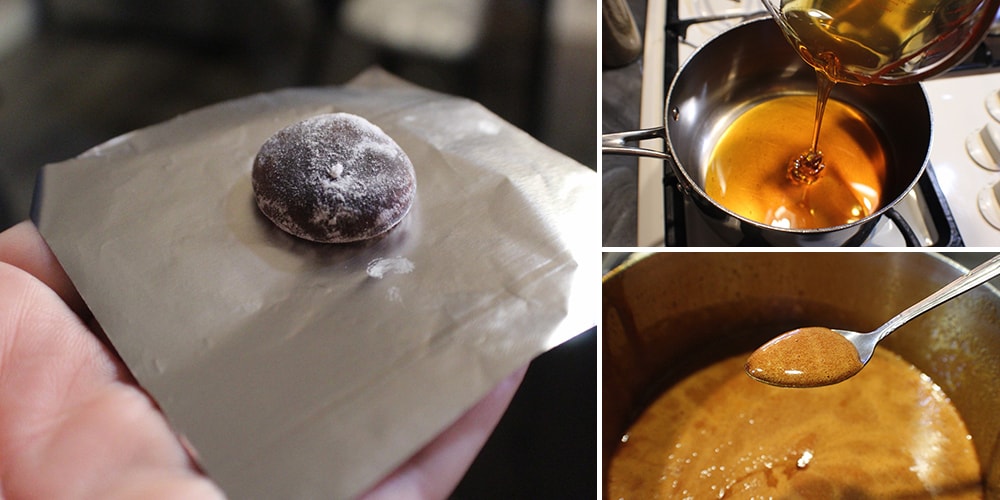
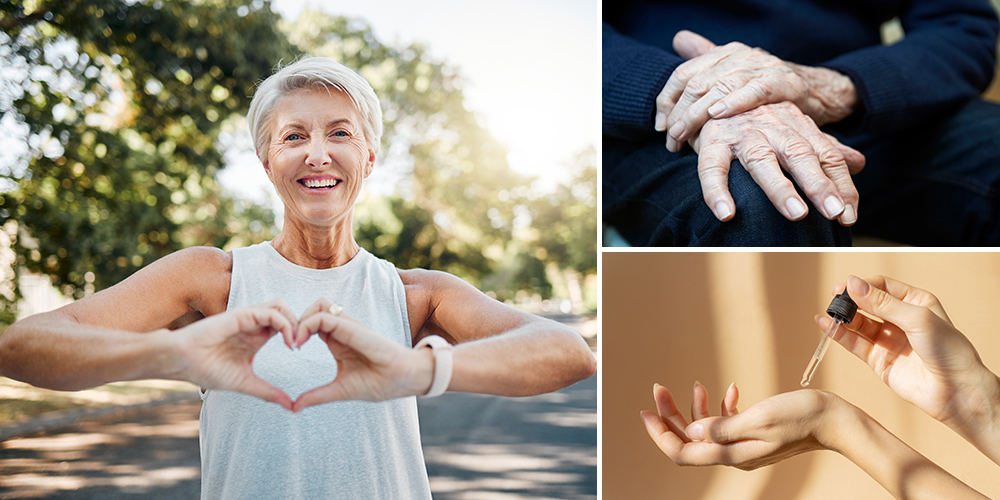

where can i buy dried butterfly pea flowers
Hi Pam,
Butterfly Pea Flowers can be found in grocery stores (Walmart, Trader Joe’s, Target, Whole Foods Market) or online on Amazon, Etsy, and many Specialized Online Health Stores.
Many blessings and good health!
Would blue flag iris have some of the same properties? Thank you.
Hi Shane,
Whilst best known as a natural skincare remedy, blue flag is loaded with nutrients and, like many herbal medicine ingredients, has health benefits beyond its traditional primary use. Blue flag is used as a laxative and to relieve fluid retention and bloating.
However, there isn’t enough information about the dosage or how the blue flag actually works.
Many blessings and good health!
Is this BlueFlag the same as the ButterflyBlueFlower??
It has also been proven to be effective in increasing blood flow to the scalp which promotes hair growth and even seems to be more effective than rogaine. It tastes a little like boiled spinach, but adding hibiscus tea completely hides the butterfly pea tea flavor. Plus the hibiscus has complimentary benefits as does lemongrass. I love to mix them together for a refreshing evening tea or add lemon for a great morning cold drink. Another interesting quality of butterfly pea tea is that when a study was conducted using different sweeteners, including sugar and honey, there was little to no difference in blood sugar levels compared to how much sugar was used in the tea due to it’s ability to inhibit glucose absorption. So it is great for helping regulate blood sugar. Of course for me adding sugar to the butterfly pea tea lessens the flavor of the tea, but doesn’t change the actual taste unless you add another tea or lemon to cover the butterfly pea taste. I also find that 14 flowers is overkill for a couple cups of tea. I use 3-5 flowers for a cup and 14 will make a full pot that can have hot water added to make an additional 2-3 more pots before it starts to lessen in that dark azure blue.
Hi Abbadon,
Thank you so much for sharing this with us. We really appreciate it and we are happy to hear that butterfly pea tea works great for you.
Many blessings and good health!
I see some lovely fresh violet flowers in my yard…can I use these?
Hi Joan,
Violet Flowers and Butterfly Pea Flowers are different species of plants.
But you can use Violet Flowers as well. To make violet tea simply place a tablespoon or two of fresh, clean violet flowers in your teacup. Cover with boiling water and allow to steep for about 10 minutes. The flowers give off a lovely blueish color that deepens to purple the more violets you use. Strain out the flowers and drink.
Some people use sweet violet for respiratory tract conditions, particularly dry or sore throat, stuffy nose, coughs, hoarseness, and bronchitis. Other uses include treating pain in the minor joints, fever, skin diseases, headache, trouble sleeping (insomnia), and tuberculosis.
Many blessings and good health!
These look similar to wild violets. Do the violets have any of the same properties? They also change color when adding lemon juice to the cooked flower water.
Hi Beth,
Violet Flowers and Butterfly Pea Flowers are different species of plants.
But you can use Violet Flowers as well. To make violet tea simply place a tablespoon or two of fresh, clean violet flowers in your teacup. Cover with boiling water and allow to steep for about 10 minutes. The flowers give off a lovely blueish color that deepens to purple the more violets you use. Strain out the flowers and drink.
Some people use sweet violet for respiratory tract conditions, particularly dry or sore throat, stuffy nose, coughs, hoarseness, and bronchitis. Other uses include treating pain in the minor joints, fever, skin diseases, headache, trouble sleeping (insomnia), and tuberculosis.
Many blessings and good health!
Nice to know of the amazing properties.
Any suggestions on seed availability?
I was going to order from Amazon – lots of options. However the reviews said some products were old, taste awful and had long black hairs in the packages. Is there a product you can recommend that might help me avoid musty, moldy hairy tea products? 🍵
You can get good quality organic blue pea flowers at wendywildcraft.com
I love this post! So hard to find good information about blue pea flowers. Great recipe.
Hi can i use the powder form or is it better to use the real flower, I am from Alberta, Canada not sure where to find the flower